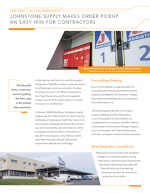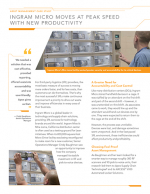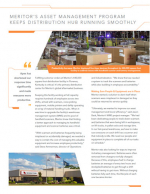Implementing Enterprise-Level Automation in Conjunction with Integrated Supply Programs
Implementing enterprise-level point-of-use automation on a large scale with integrated supply programs has the potential to transform the flow of indirect materials into manufacturing plants throughout the world and to dramatically reduce costs for clients, their integrators, and throughout the entire supply chain.
This white paper explores the opportunities, demands and challenges of implementing enterprise-level point-of-use (“POU”) automation on a large scale in conjunction with integrated supply programs.
Each of these programs can independently have a major, positive impact on organizational efficiency and performance metrics. When implemented in tandem, the synergistic opportunity to achieve quantum gains is enhanced dramatically.
This white paper does not present the business case for the tandem implementations. It addresses opportunities and considerations that exist for large organizations planning to implement these strategies on a large scale.
The potential for improved operational efficiencies and cost reduction is profound. However, organizations aspiring to launch broad-based initiatives must recognize that each of these strategies is intrinsically complex. The implementation of these programs concurrently requires that the enterprise, the point of-use automation supplier, and integrated supplier(s) work together closely to optimize the opportunities and toeliminate redundancies.
Many factors must be considered to effectively implement automated point-of-use systems at the individual plant level. Effective implementation of plant-level integrated supply programs requires that careful planning be completed and strategic directions be clearly set forth in advance of implementation.
When both point-of-use automation systems and integrated supply programs are implemented concurrently at the plant level, the considerations are compounded. Rolling out these programs on a large scale compounds the considerations further.
Among the opportunities to be considered are:
- Demand Management will become increasingly important; new possibilities will improve efficiencies throughout the supply chain.
- Transactions (issues, returns, replenishment) will move from the tool crib or supply room to the point-of-use; manual transactions will be automated and digitized.
- Inventory will be transformed and virtualized; information will replace physical inventory.
- Supply Chain Management will be streamlined and automated; seamless data flows enabled by the collection of clean, actionable data at the point-of-use will automate the replenishment process.
- Data-Driven Decision-Making Capabilities will be enhanced through better visibility to usage, replenishment, and process information, visual information display, trend analyses and real-time alerts.
These factors, among others, will cause management at the enterprise and plant levels, integrated suppliers and their tiered commodity suppliers to embrace new operating paradigms and work-flow processes.
From a systems perspective, historical IT models must also be reviewed and in most cases refreshed to efficiently support the new operating structure.
What’s Related




Favorites





